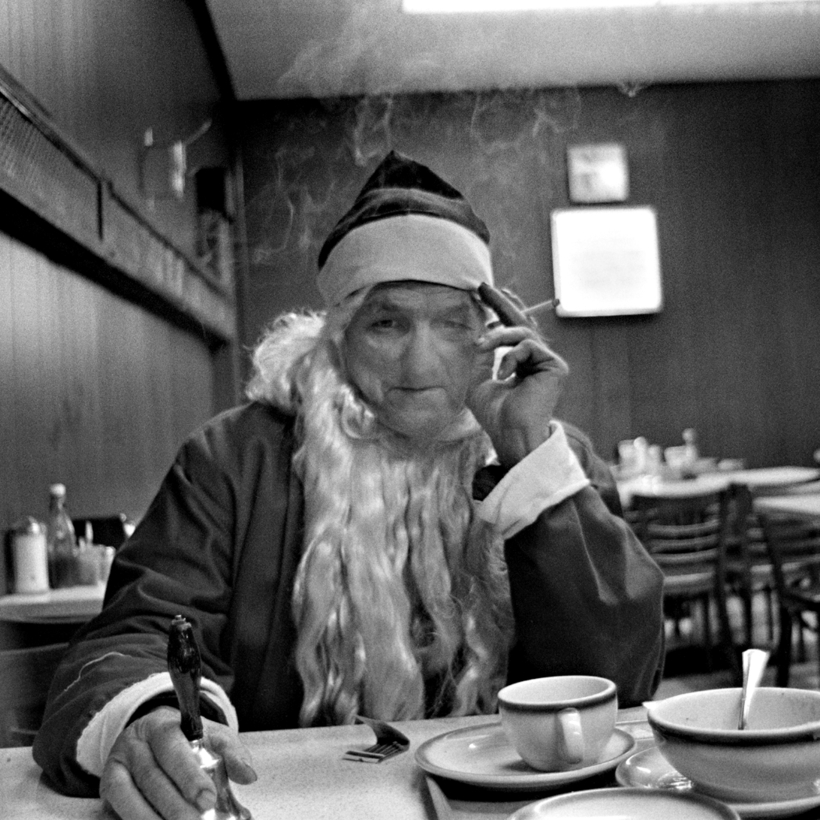Of all the holidays we enjoy and endure, Christmas is the one most laden with childhood memories, adult expectations, and the lore of Hollywood classics, where the fireplace logs crackle, carolers make their angelic rounds, and lyrical snowflakes descend on cue. But for those who find themselves spending Christmas alone in the city, the sparkly merriment can make them want to burrow under the blanket and feel sorry for themselves—a holiday pity party laced with melancholy. Don’t get me wrong. Feeling sorry for yourself is one of life’s underrated satisfactions—with proper nurturing, it can be honed into a fine art—but there are better satisfactions to be had if one adopts a different mindset.
In those bygone days before I joined the middle ranks of the bourgeoisie and got decent furniture, when I was single and living alone with a black cat in a studio apartment on the always-happening St. Marks Place, I learned to look forward to having Christmas to myself. Manhattan never felt more mine than in the weeks leading up to the 25th, when nearly everybody else’s attention was geared outward as they made their shopping runs or prepared their holiday getaways. As the crowds thinned out, the buildings became more themselves, shifting from the background of daily hubbub to the foreground, showing off their architectural bona fides. Where the streets and shop windows in Midtown and along Fifth Avenue were gauded up like a Broadway finale, downtown was more sparsely decorated, the isolated strings of fairy lights and the odd Christmas wreath offering a poignant, poetic touch.

I found going to the movies on Christmas Day akin to a church service, like attending Mass without all the kneeling. I would only go to Hollywood biggies on Christmas Day, craving something larger than life and outfitted with star power that the latest art-house darling couldn’t match. The Sting opened on Christmas Day in 1973, and I journeyed early to the Upper East Side to watch Paul Newman and Robert Redford gleam and grin like the last remaining repositories of Clark Gable. A year later Young Frankenstein was my Christmas date, the retro black-and-white cinematography like experiencing time travel through an old TV. The Sting and Young Frankenstein have earned fond niches as perennial not-quite-classics, but it’s their associations with Christmas that linger longer for me than any of the antics on-screen.
It wasn’t only moviegoing that seemed heightened. The week between Christmas and New Year’s was and is the optimum time to hit the museums and avoid the crush, the artworks better able to express themselves when they don’t have clots of bystanders staring at them. We need space around our experiences for them and us to fully breathe. It’s also a good time to “take in the theater,” catch up on all that professional emoting on tap. With Christmas in the rearview mirror, the actors are still giving it their all but with less audience-pleasing strain. Be adventurous. I saw my first Sam Shepard play, Geography of a Horse Dreamer, during this hammock week, and decades later I can still picture the crummy set.
So if you’re alone in the city (any city) this Christmas, such forays may help you get through the holiday stretch to New Year’s Eve. At that point, you’re truly on your own. Here the counsel is reversed. If venturing out on Christmas is the expansive, morale-lifting approach, staying in on New Year’s Eve is the sanest option. Back then we didn’t have Netflix or some other streaming service to tide us over the noisome night. We just hunkered in and wished that the stroke of midnight would hurry up already.
James Wolcott is a Columnist for AIR MAIL. He is the author of several books, including the memoir Lucking Out: My Life Getting Down and Semi-Dirty in the Seventies and Critical Mass, a collection of his essays and reviews

